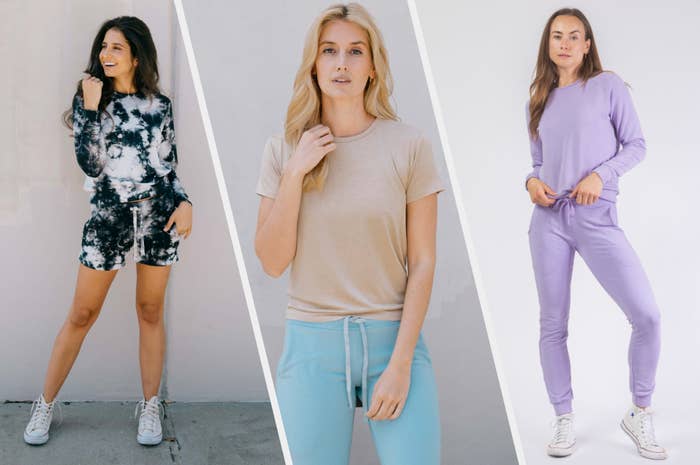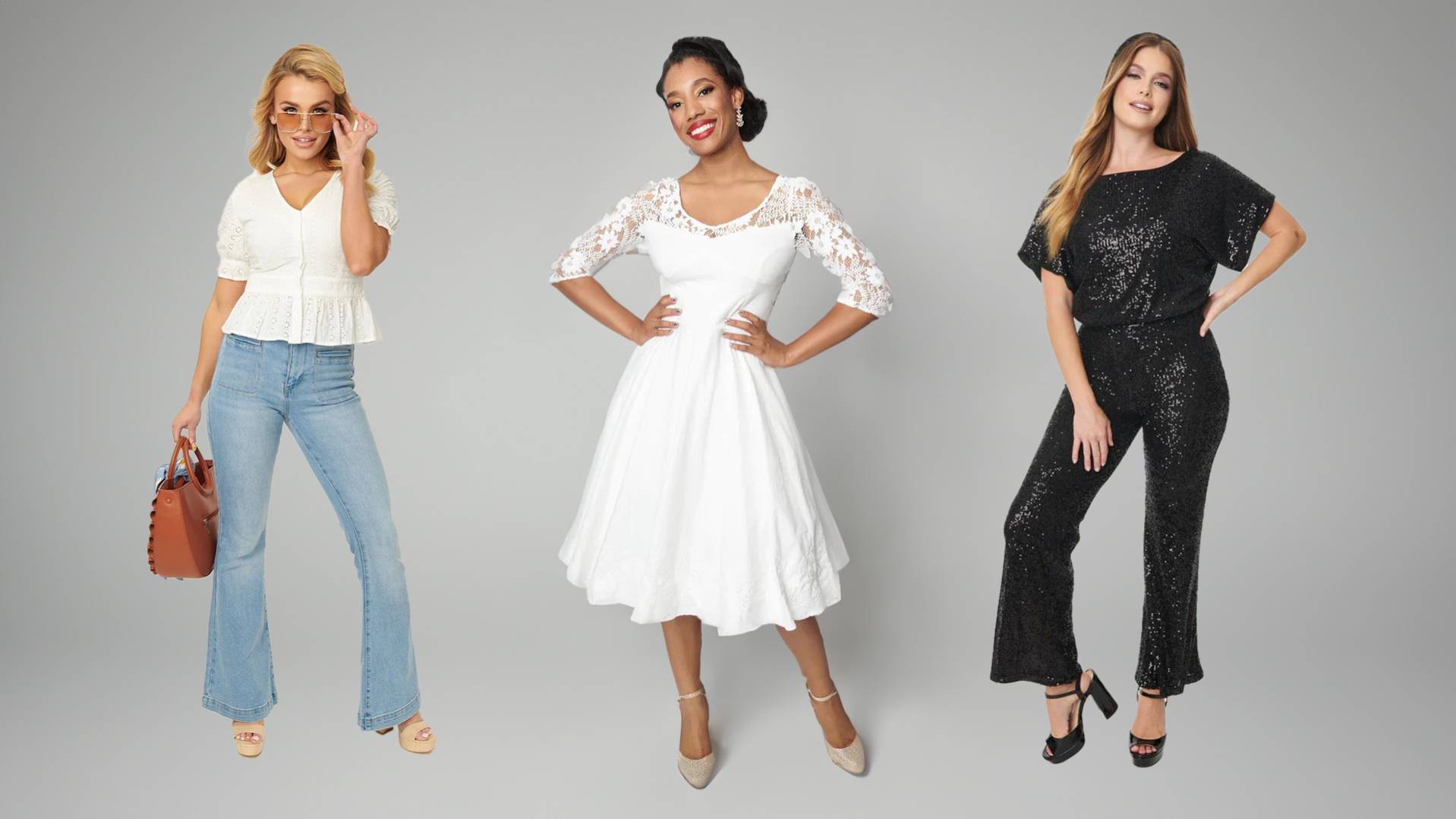Recognizing Clothing: The Relevance of Textile Selections in Your Closet
The choice of fabric in clothes plays a critical duty in both visual appeals and capability. Various products use varying degrees of comfort, durability, and breathability, directly influencing the user's experience. Understanding these subtleties can improve one's wardrobe substantially. Yet, numerous forget exactly how these selections can impact not just individual design, however additionally sustainability. What fabric decisions could redefine your closet and straighten it with both design and duty?
The Role of Textile in vogue and Performance

Usual Material Kinds and Their Attributes
When selecting clothes, understanding the features of common material kinds is important for making educated choices. Cotton, a widely-used natural fiber, is recognized for its convenience, softness, and breathability, making it ideal for casual wear and daily garments. Linen, an additional all-natural option, boasts excellent moisture-wicking residential or commercial properties and a distinctive texture, ideal for warm climates.Wool, typically favored for its heat and longevity, varies in excellence; merino woollen is soft versus the skin, while coarser kinds are made use of for outerwear. Artificial textiles like polyester and nylon use resilience and resistance to creases, making them popular for activewear and travel garments. Lastly, blends, which integrate natural and artificial fibers, can enhance capability while keeping comfort. By recognizing these textile characteristics, people can choose garments that straightens with their way of living and aesthetic preferences.
Breathability and Convenience: Selecting the Right Fabrics for Different Climates
Picking the ideal textiles for different climates can significantly boost convenience and overall wearability. Breathable materials are essential in warm environments, as they permit air blood circulation and dampness dissipation. Fabrics such as cotton, bed linen, and moisture-wicking synthetics efficiently draw sweat away from the body, maintaining the user cool and completely dry. On the other hand, in cooler climates, thicker textiles like wool or fleece offer insulation while keeping breathability, making sure warmth without overheating.Additionally, the option of textile weight plays a crucial duty; light-weight fabrics are better for summer season, whereas heavier choices are suited for winter wear. Recognizing the one-of-a-kind properties of each material enables individuals to clothe appropriately for varying climate conditions. Ultimately, choosing comfortable and breathable textiles tailored to details climates can greatly enhance everyday convenience and enhance the overall experience of putting on clothes.
Durability and Treatment: How Fabric Impacts Longevity of Your Closet
Selecting the appropriate products can considerably affect the sturdiness and care requirements of a closet. Fabrics such as cotton and polyester are understood for their resilience and ease of maintenance, making them suitable for day-to-day wear. On the other hand, delicate products like silk and shoelace call for more mindful handling and specialized cleaning techniques, which can enhance the moment and initiative required for care. Branded Clothing.Durability is also influenced by the textile's weave and coating; securely woven materials often tend to stand up to damage much better than loosely woven choices. Furthermore, artificial blends often give boosted resilience, integrating the ideal high qualities of multiple fibers.Understanding the treatment guidelines for every fabric is vital, as improper drying or cleaning can bring about early wear. Inevitably, selecting sturdy products can bring about a longer-lasting wardrobe, lowering the frequency of replacements and contributing to a more sustainable fashion choice
The Impact of Material on Fit and Shape

Lasting Material Selections: Making Eco-Friendly Decisions
The influence of material prolongs beyond fit and shape to include environmental elements, prompting a growing interest in lasting textile choices. Environment-friendly textiles, such as natural cotton, hemp, and Tencel, are getting grip among customers who prioritize sustainability in their closets. These products are typically produced with fewer chemicals and water, decreasing their ecological footprint.Additionally, recycled fabrics, made from post-consumer waste, offer an innovative service to the fabric sector's air pollution issue. Brands progressively welcome transparency in their sourcing Click Here methods, allowing customers to make informed choices regarding their purchases.Choosing lasting materials not just sustains moral methods however additionally motivates the garment industry to take on even more liable production approaches. As awareness of environmental concerns increases, people are urged to assess the long-lasting effect of their fabric choices, cultivating a motion towards an extra sustainable and eco mindful technique to style.
Raising Design: Exactly How Fabric Can Change an Outfit
While lots of may concentrate on color and cut when choosing an outfit, the selection of textile plays an important role in elevating style and boosting general look. Different products convey unique state of minds and messages; for instance, silk exhibits high-end and class, while denim uses a laid-back, kicked back ambiance. The appearance and drape of a textile can drastically alter the silhouette, with organized textiles offering a sleek look and softer ones creating an extra fluid, kicked back aesthetic.Moreover, the weight of the fabric affects wearability across periods. Light-weight fabrics like linen and cotton are excellent for summer, while much heavier materials such as woollen and velour provide heat and style in cooler months. Understanding textile residential properties, such as breathability and stretch, additionally equips people to make enlightened choices that enhance comfort without jeopardizing design. Ultimately, the right fabric can transform a clothing from average to phenomenal, making it a crucial factor to consider in any type of wardrobe.
Regularly Asked Concerns
Just how Do I Identify the Fabric Web Content of My Clothes?
To determine fabric content, one can analyze care labels, conduct melt tests for fiber recognition, or seek advice from material examples. These methods assist separate materials, making sure notified choices for apparel care and upkeep in everyday wear.
Can Fabric Option Affect My State Of Mind or Self-confidence?
Material choice can considerably impact an individual's state of mind and confidence. Branded Clothing. Particular materials may stimulate sensations of comfort or sophistication, while others can feel unflattering or restrictive, inevitably affecting self-perception and emotional well-being throughout the day
What Fabrics Are Ideal for Sensitive Skin?
For people with delicate skin, all-natural fabrics like linen, cotton, and bamboo are frequently recommended. These products are breathable, hypoallergenic, and much less likely to cause irritability, making them appropriate choices for comfort and skin health.
Just how Do I Effectively Laundry and Look After Various Fabrics?
To appropriately wash and care for different materials, one must think about each product's particular requirements, consisting of temperature settings, detergents, and drying techniques, guaranteeing long life and maintaining the textile's original high qualities for excellent usage.
Are There Details Fabrics for Athletic or Performance Use?
Sports or efficiency wear typically utilizes fabrics such as nylon, polyester, and spandex. These products are made for moisture-wicking, breathability, and versatility, enhancing activity and convenience during exercises while providing toughness and assistance. Conversely, in colder environments, thicker fabrics like wool or fleece give insulation while preserving breathability, ensuring warmth without overheating.Additionally, the choice of textile weight plays a crucial role; lightweight fabrics are preferable for summer, whereas larger options are suited for website link winter season wear. In contrast, fragile products like silk and shoelace need even more mindful handling and specialized cleaning approaches, which can enhance the time and effort required for care.Durability is also influenced by the fabric's weave and surface; tightly woven fabrics tend to withstand wear and discover this tear far better than loosely woven alternatives. In comparison, stiff fabrics can limit movement however supply a classic, refined look.Moreover, the thickness and appearance of the textile can influence the visual perception of body form. The influence of fabric prolongs past fit and shape to encompass ecological aspects, triggering a growing interest in sustainable material selections. The texture and drape of a fabric can significantly change the shape, with structured fabrics supplying a sleek look and softer ones developing a much more fluid, kicked back aesthetic.Moreover, the weight of the fabric affects wearability across periods.